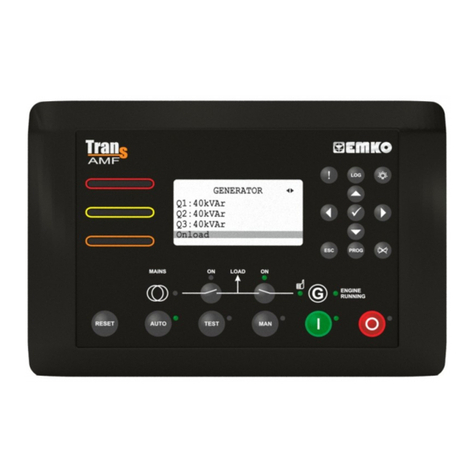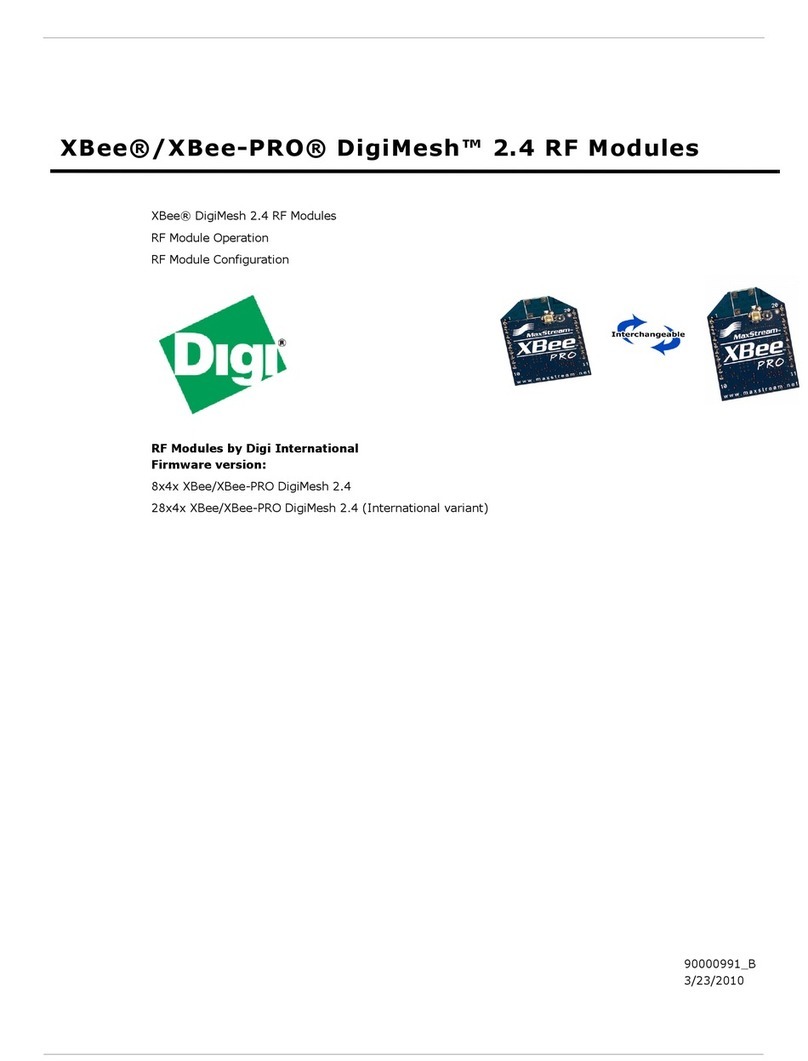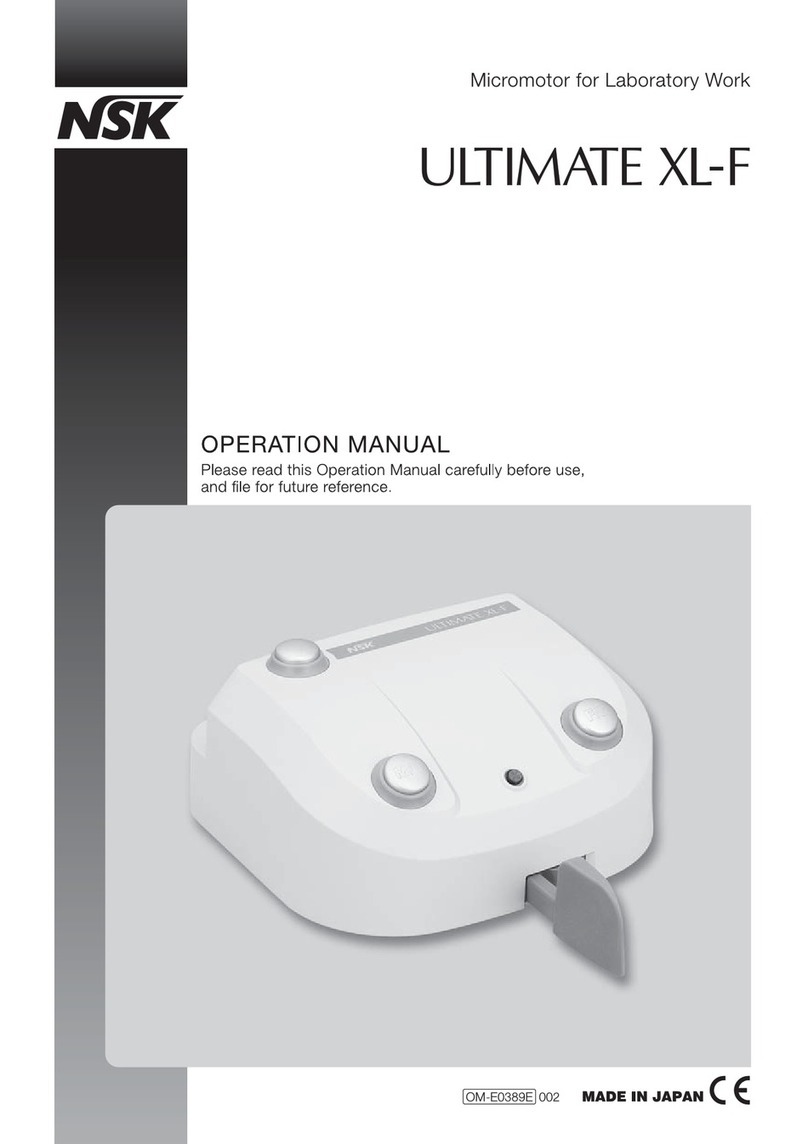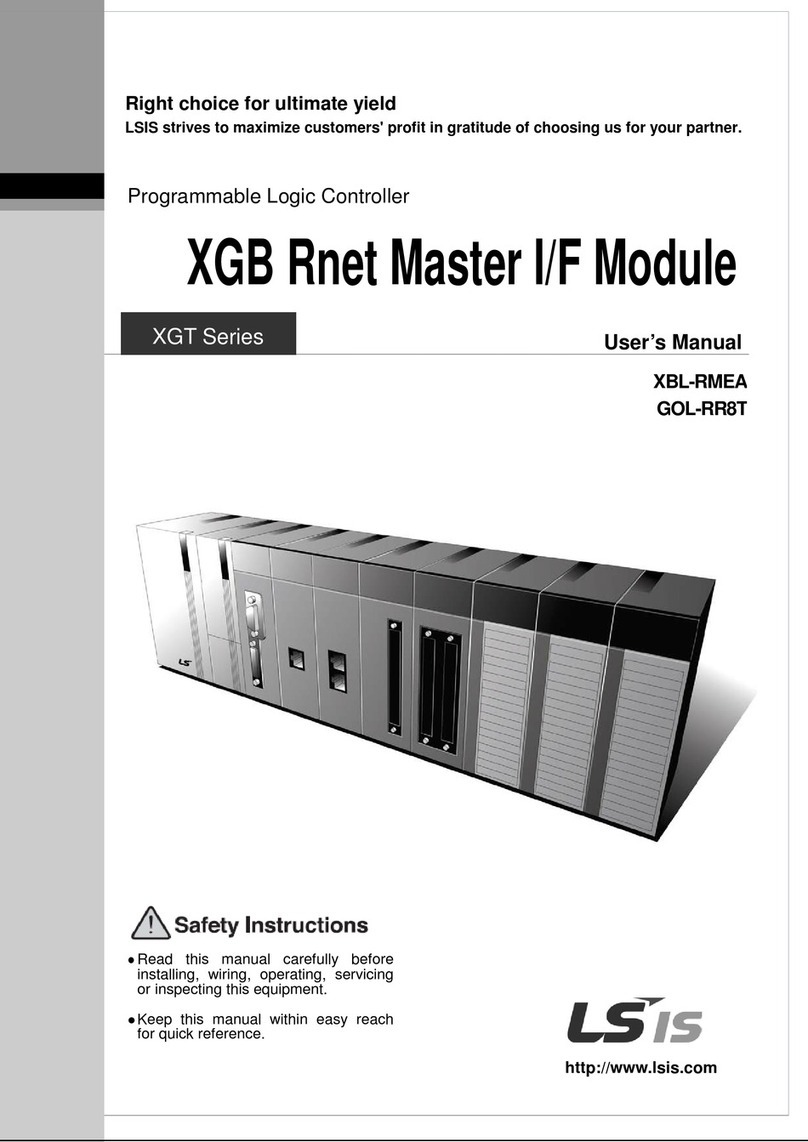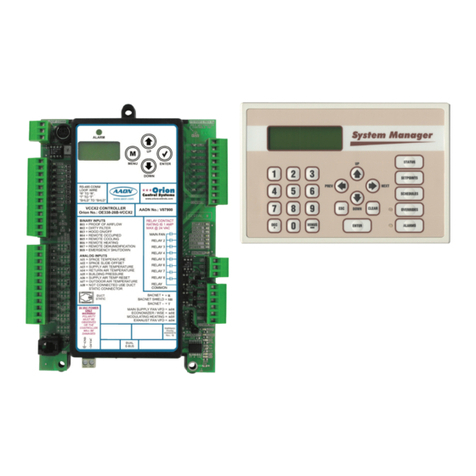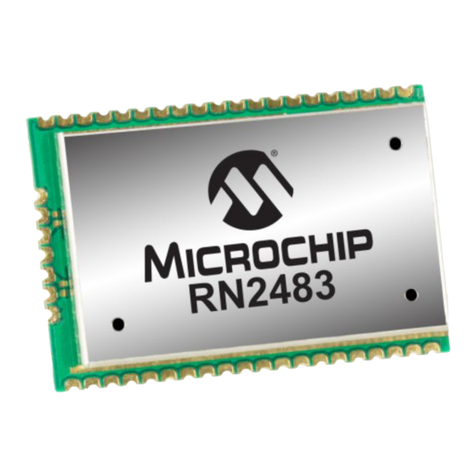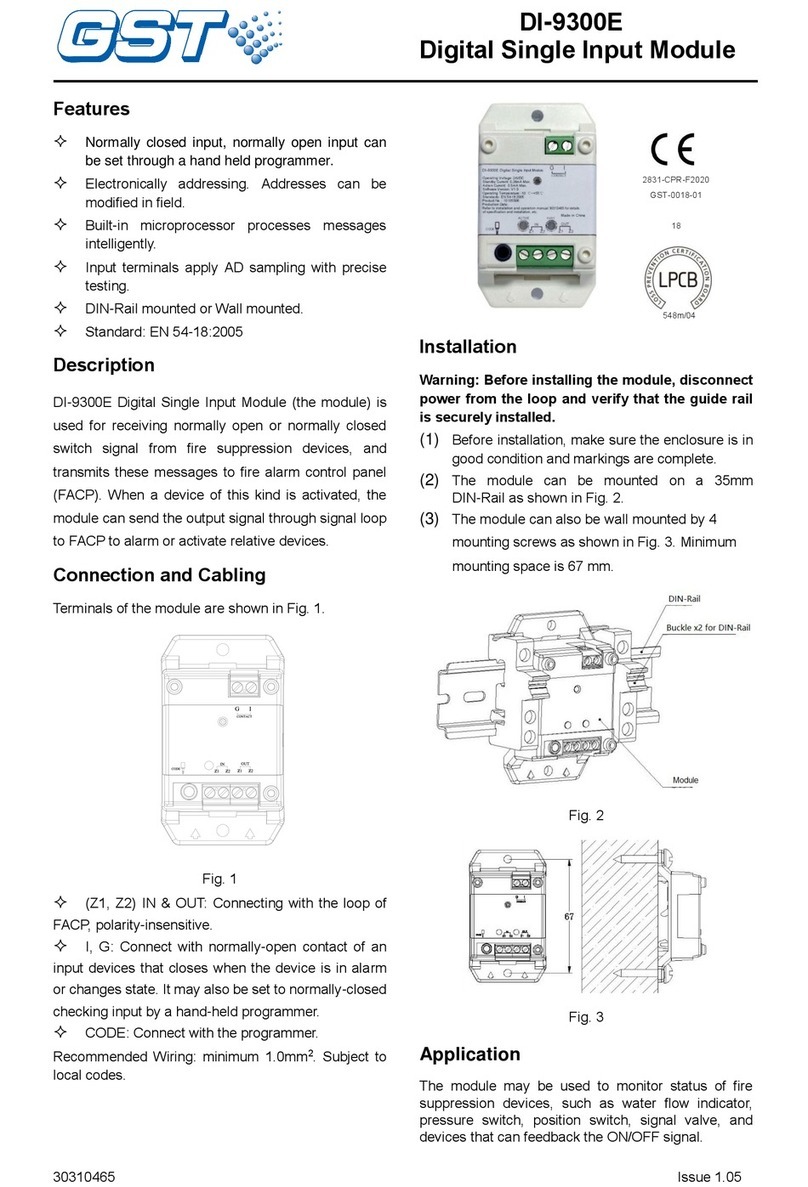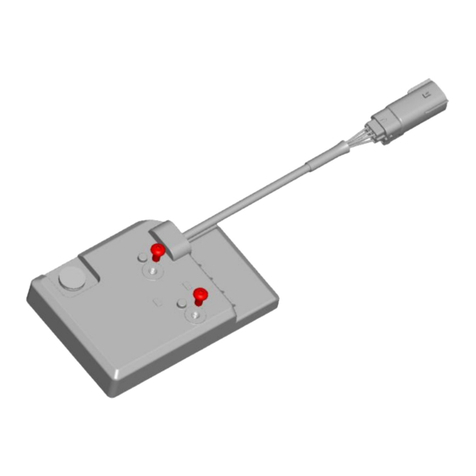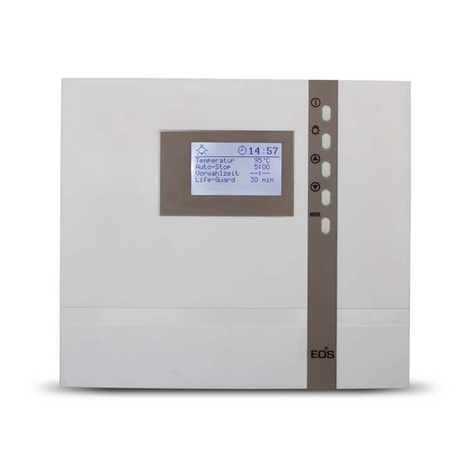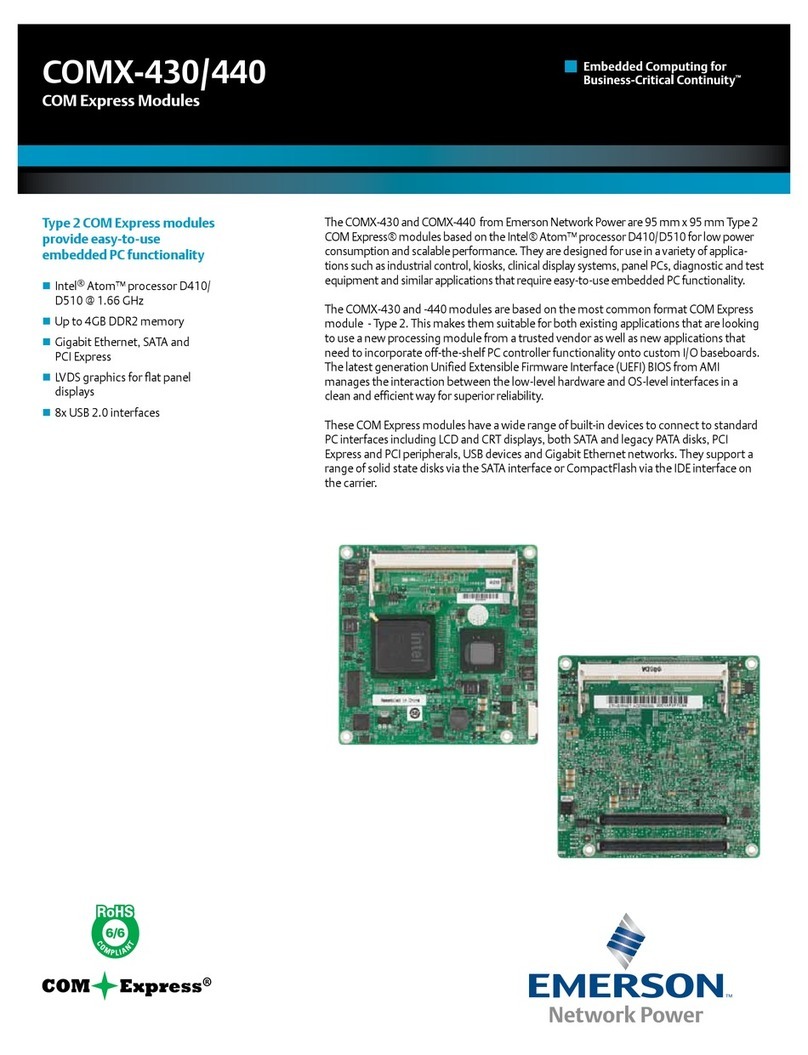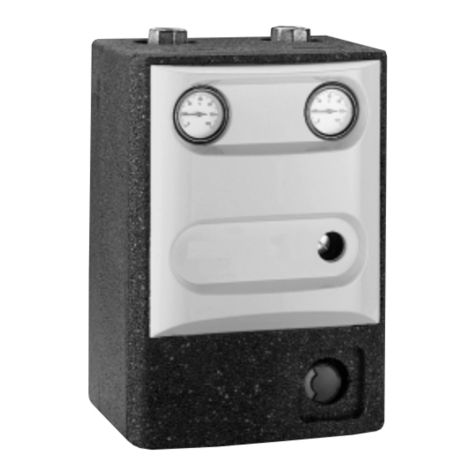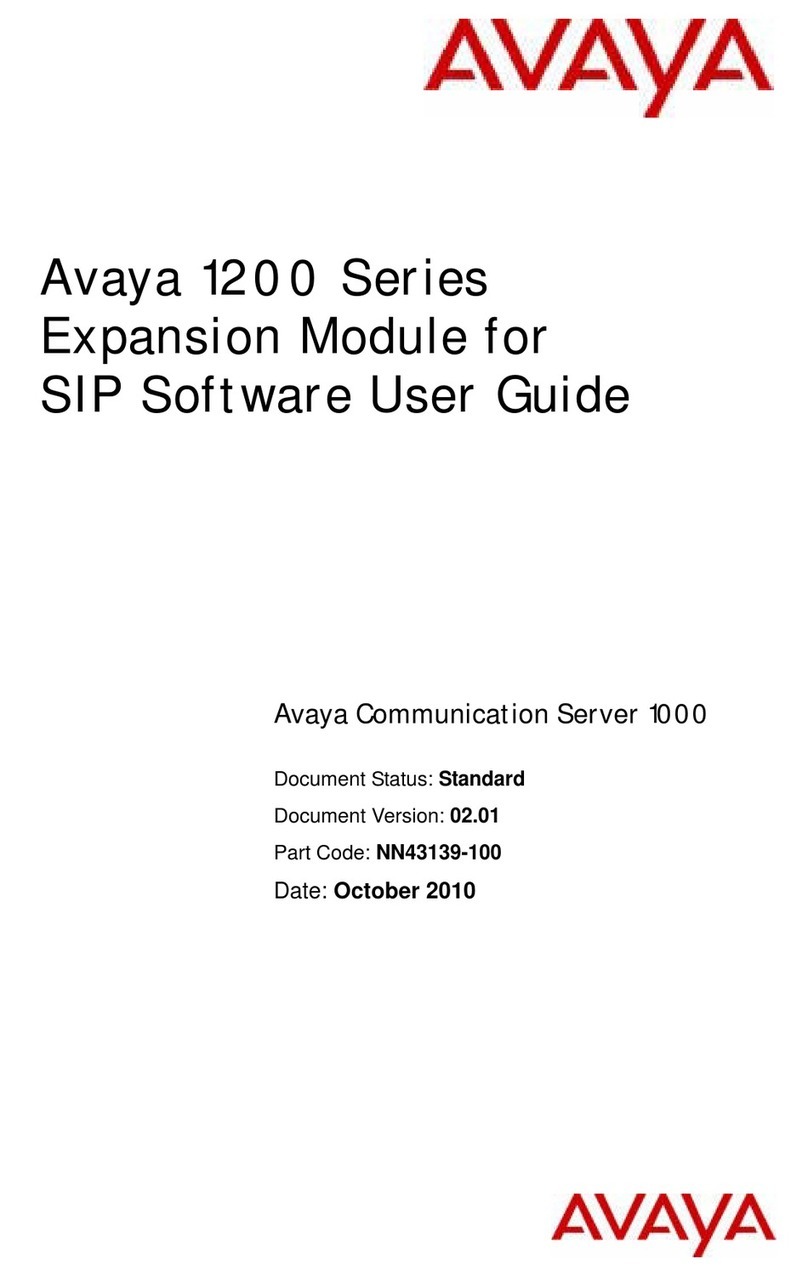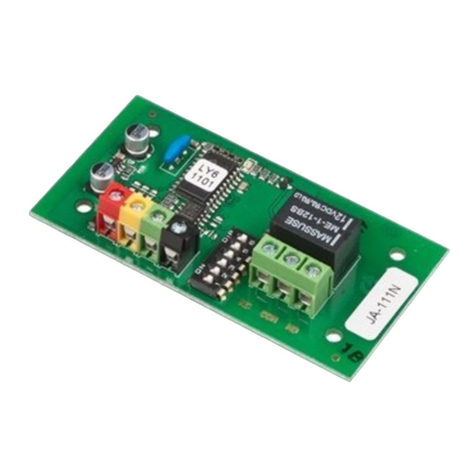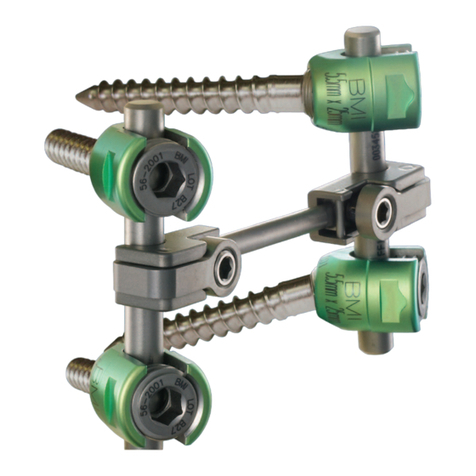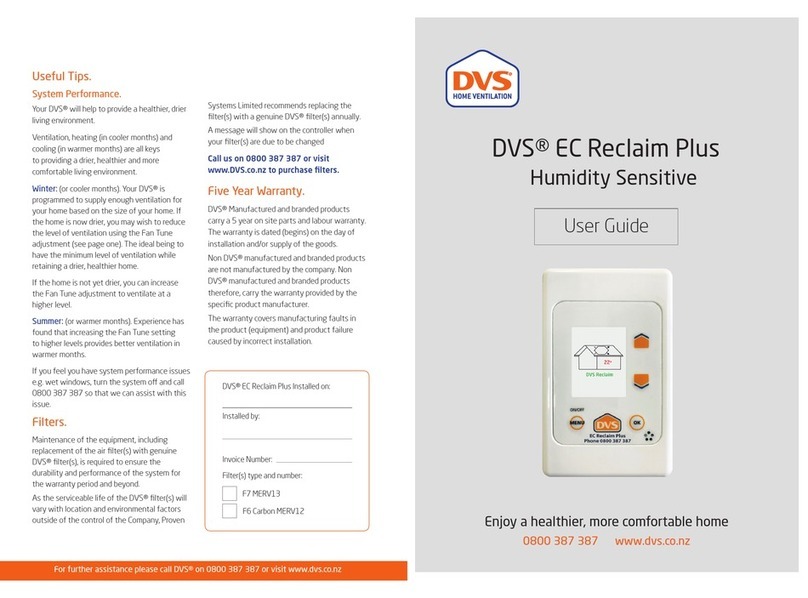TOPWAY DISPLAYS LMT050DNCFWU-NCA User manual

LMT0
50DNCFWU
LCD Module User Manual
Prepared by:
Date:
Rev.
Descriptions
0.1 Preliminary
Document Name:
LMT050DNCFWU
50DNCFWU
-
N
LCD Module User Manual
Checked by:
Approved by:
Date: Date:
LMT050DNCFWU
-NCA-Manual-Rev0.1
Page: 1 of 11
N
CA
Approved by:
Release Date
2012-11-15
ZZZWRSZD\GLVSOD\VHX
LQIR#WRSZD\GLVSOD\VHX

TOPWAY
LCD Module User Manual LMT050DNCFWU-NCA
Document Name: LMT050DNCFWU-NCA-Manual-Rev0.1
Page: 2 of 11
Table of Content
1. General Specification ............................................................................................................3
2. Block Diagram........................................................................................................................3
3. Terminal Functions................................................................................................................4
3.1 Interface...............................................................................................................................4
4. Absolute Maximum Ratings..................................................................................................5
5. Electrical Characteristics......................................................................................................5
5.1 DC Characteristics (MCU terminal).......................................................................................5
5.2 Touch Panel Characteristics.................................................................................................5
6. AC Characteristics.................................................................................................................6
6.1 TFT Controller Timing Characteristics..................................................................................6
6.2 TFT Controller Reset Timing ................................................................................................7
6.3 TFT Timing...........................................................................................................................8
7. Optical Characteristics..........................................................................................................9
8. Precautions of using LCD Modules....................................................................................11
ZZZWRSZD\GLVSOD\VHX
LQIR#WRSZD\GLVSOD\VHX

TOPWAY
LCD Module User Manual LMT050DNCFWU-NCA
Document Name: LMT050DNCFWU-NCA-Manual-Rev0.1
Page: 3 of 11
1. General Specification
Note:
*1 Color tune may slightly changed by temperature and driving voltage.
2. Block Diagram
Note:
LATCHES on board expend the host 8bit data for SSD1963 16bit Interface.
Screen Size(Diagonal) : 5.0 inch
Resolution : 800(RGB) x 480
Signal Interface : 8 bit parallel interface
Color Depth : 65,535 color (16bit) *1
Pixel Pitch : 0.36 x 0.36 (mm)
Pixel Configuration : RGB Stripe
Display Mode : Transmissive / normal white
Surface Treatment : Anti-Glare Treatment
Viewing Direction : 6 o’clock
Outline Dimension : 142.0 x 79.0 x 8.1 (mm)
(see attached drawing for details)
Active Area : 108 x 64.8 (mm)
Backlight : 2x7 LEDs
Operating Temperature : -20 ~ +70°C
Storage Temperature : -30 ~ +80°C
5.0”TFT Panel
Source Driver
Gate Driver
Backlight
Backlight
Driver
Power Circuit
TFT controller
SSD1963
VDD, VSS
D0~D
7
/RES,
/WR, /CS,
A0
/LE_HI
LATCHES
TE
Touch Panel
T
P Controller
DIN, DOUT, DCLK
/PENIRQ, BUSY, /CS_TP
ZZZWRSZD\GLVSOD\VHX
LQIR#WRSZD\GLVSOD\VHX

TOPWAY
LCD Module User Manual LMT050DNCFWU-NCA
Document Name: LMT050DNCFWU-NCA-Manual-Rev0.1
Page: 4 of 11
3. Terminal Functions
3.1 Interface
No.
Pin Name
I
/
O
Descriptions
1VSS P Power Supply GND (0V)
2
3VDD P Positive Power Supply (5.0V)
4
5 A0 I Register Select
A0=0, command
A0=1, data or parameter
6 /CS I Chip Select signal
7 /RES I Reset signal,
/RES=1, normal
/RES=0, reset execute
8 D0(D8) I 8bit Data bus: :
15 D7(D15)
16 TE O Tear Signal (*1)
17 NC -- No Connection
18 /WR I Write signal
19 VSS P Power Supply GND (0V)
20 /LE_HI I LATCH the high byte data;
/LE_HI=1, transparent;
/LE_HI=0, LATCHED
21 /PENIRQ I Pen Interrupt (*2)
22 DOUT O Data Output
23 BUSY O Busy Output
24 DIN I Data Input
25 /CS_TP I Chip Select, also for initiating the conversions
26 DCLK I Clock Input for Serial Data & conversions
Note.
*1. Tear signal may leave open when not use
*2. Pulled-up by internal resistor
ZZZWRSZD\GLVSOD\VHX
LQIR#WRSZD\GLVSOD\VHX

TOPWAY
LCD Module User Manual LMT050DNCFWU-NCA
Document Name: LMT050DNCFWU-NCA-Manual-Rev0.1
Page: 5 of 11
4. Absolute Maximum Ratings
Items
Symbol
Min.
Max.
Unit
Condi
tion
Supply Voltage V
DD
-0.3 +6.0 V GND = 0V
Operating Temperature T
OP
-20 +70 CNo Condensation
Storage Temperature T
ST
-30 +80 CNo Condensation
Cautions:
Any Stresses exceeding the Absolute Maximum Ratings may cause substantial damage to the device. Functional
operation of this device at other conditions beyond those listed in the specification is not implied and prolonged exposure
to extreme conditions may affect device reliability.
5. Electrical Characteristics
5.1 DC Characteristics (MCU terminal) GND=0V, VDD =5.0V, TOP =25C
Items
Symbol
MIN.
TYP.
MAX.
Unit
Applicable Pin
Operating Voltage VDD 4.8 5.0 5.5 V VDD
Input High Voltage V
IH
3.0 - 3.3 V Input pins
Input Low Voltage V
IL
GND - 0.3 V Input pins
Output Signal Low Voltage V
O
L
- - GND+0.4 V
Output Signal High Voltage V
O
H
3.3 - - V
Operating Current (*1) IDD -260 - mA 60%PWM
390 100%PWM
Note.
*1. For different LCM, the value may have a bit of difference.
*2. To test the current dissipation, use “all Black Pattern”.
5.2 Touch Panel Characteristics TOP =25C
Items
Symbol
Min.
Typ.
Max.
Unit
Applicable Pin
Operating Force Fop 30 - 70 g -
Operating Voltage Vop - 5 - V -
Life Time TL - 1,000,000 - times -
Cautions: Exceeding the recommended Condition could cause substantial damage to the touch
panel and shorten its life time.
ZZZWRSZD\GLVSOD\VHX
LQIR#WRSZD\GLVSOD\VHX

TOPWAY
6. AC Characteristics
6.1 TFT Controller Timing
Characteristics
Item
System Clock Period(*1)
Control Pulse High Width
Write
Read
Control Pulse Low Width
Write (next write cycle)
Write (next read cycle)
Read
Address Setup Time
Address Hold Time
Write Data Setup Time
Write Data Hold Time
Write Low Time
Read Data Hold Time
Access Time
Read Low Time
Rise Time
Fall Time
Chip select setup time
Chip select hold time to read signal
Note:
*1. tMCLK
is the System Clock Period, which may config by internal PLL setting
*2. LMT050DNCFWU
is driving by external 10MHz, and clock up by enabling the
*3. Suggested PLL clock setting is 200MHz
LCD Module User Manual
Document Name:
LMT050DNCFWU
Characteristics
8080 Mode Write Timing
8080 Mode Read Timing
VSS
=0V, V
Symbol
MIN.
TYP.
t
MCLK
1/f
MCLK
-
tPWCSL 16 1.5*tMCLK
38
1.3*t
MCLK
tPWCSH
16 1.5*tMCLK
100
9*t
MCLK
100
9*t
MCLK
t
AS
1.3
-
t
AH
2.5
-
t
DSW
5
-
t
DHW
1.3
-
t
PWLW
15
-
t
DHR
1.3
-
t
ACC
40
-
t
PWLR
45
-
t
R
-
-
t
F
-
-
t
CS
2.5
-
Chip select hold time to read signal
t
CSH
4
-
is the System Clock Period, which may config by internal PLL setting
is driving by external 10MHz, and clock up by enabling the
SSD1963 internal PLL
*3. Suggested PLL clock setting is 200MHz
LMT050DNCFWU-NCA
LMT050DNCFWU
-NCA-Manual-Rev0.1
Page: 6 of 11
=0V, V
DD=5.0V, TOP=25C
MAX.
Unit
-
ns
- ns
-
ns
- ns
-
ns
-
ns
-
ns
-
ns
-
ns
-
ns
-
ns
-
ns
-
ns
-
ns
0.4
ns
0.4
n
s
-
ns
-
ns
SSD1963 internal PLL
ZZZWRSZD\GLVSOD\VHX
LQIR#WRSZD\GLVSOD\VHX

TOPWAY
6.2
TFT Controller Reset Timing
Item
Reset setup time
Reset pulse
Reset hold time
LCD Module User Manual
Document Name:
LMT050DNCFWU
TFT Controller Reset Timing
VSS
=0V, V
Symbol
MIN.
TYP.
trs 2 -
trst 0.2 -
trh 2 -
LMT050DNCFWU-NCA
LMT050DNCFWU
-NCA-Manual-Rev0.1
Page: 7 of 11
=0V, V
DD=5.0V, TOP=25C
MAX.
Unit
- ms
- ms
- ms
ZZZWRSZD\GLVSOD\VHX
LQIR#WRSZD\GLVSOD\VHX

TOPWAY
6.3 TFT Timing
Item
Horizontal Display Area
CLKIN Frequency
One Horizontal Line
HSD pulse width
HSD Blanking
HSD Front Porch
Vertical Display Area
VSD period time
VSD pulse width
VSD Blanking
VSD Front Porch
LCD Module User Manual
Document Name:
LMT050DNCFWU
Symbol MIN. TYP. MAX.
Unit
thd 800
DCLK
fclk - 30 50
MHz
th 889 928 1143
CLKIN
thpw 1 48 255
CLKIN
thb 88
CLKIN
thfp 1 40 255
CLKIN
tvd 480 TH
tv 513 525 767 TH
tvpw 3 3 255 TH
tvb 32 TH
tvfp 1 13 255 TH
Horizontal timing diagram
Vertical timing diagram
LMT050DNCFWU-NCA
LMT050DNCFWU
-NCA-Manual-Rev0.1
Page: 8 of 11
Unit
Remark
DCLK
MHz
CLKIN
CLKIN
CLKIN
CLKIN
ZZZWRSZD\GLVSOD\VHX
LQIR#WRSZD\GLVSOD\VHX

TOPWAY
LCD Module User Manual LMT050DNCFWU-NCA
Document Name: LMT050DNCFWU-NCA-Manual-Rev0.1
Page: 9 of 11
7. Optical Characteristics
Item Symbol Condition MIN. TYP. MAX. UNIT Note.
Viewing angle
θ
T
(CR≥10)
40 50 -
degree Note 2
θ
B60 70 -
θ
L60 70 -
θ
R60 70 -
Contrast ratio CR θ=0o500 600 - - Note 1,3
Response Time Ton 25℃- 20 30 msec Note 1,4
Toff msec
Chromaticlty
White X
Backlight
is on
0.260 0.310 0.360
Note 1,5
Y 0.280 0.330 0.380
Red X 0.540 0.590 0.640
Y 0.300 0.350 0.400
Green X 0.298 0.348 0.398
Y 0.520 0.570 0.620
Blue X 0.095 0.145 0.195
Y 0.060 0.110 0.160
Luminance L - 135 - cd/m2Note 1,6
NTSC - 50 % Note 5
Luminance uniformity U 75 80 - % Note 1,7
Test Conditions:
1. IF= 160 mA, VF=9.6V, and the ambient temperature is 25. ℃
2. The test systems refer to Note 1 and Note 2.
ZZZWRSZD\GLVSOD\VHX
LQIR#WRSZD\GLVSOD\VHX

TOPWAY
Note 1:
The data are measured after LEDs are turned on for 5 minutes.
LCM displays full white. The brightness is the average value of 9
measured spots. Measurement equipment SR
Measuring condition:
-
Measuring surroundings: Dark room
- Measuring temperature: Ta=25
℃
-
Adjust operating voltage to get optimum contrast at
the center of the display.
Note 3:
The definition of contrast ratio (Test LCM using SR
Contrast
Ratio(CR) =
Luminance When LCD is at “White”state
Luminance When LCD is at “Black”state
(Contrast Ratio is measured in optimum common electrode
voltage)
Note 5:
Definition of Color of CIE1931 Coordinate and NTSC Ratio.
Color gamut:
S= Area of RGB triangle
X100%
Area of NTSC triangle
LCD Module User Manual
Document Name:
LMT050DNCFWU
The data are measured after LEDs are turned on for 5 minutes.
LCM displays full white. The brightness is the average value of 9
measured spots. Measurement equipment SR
-3A (1°)
Measuring surroundings: Dark room
℃
.
Adjust operating voltage to get optimum contrast at
Note 2:
The definition of viewing angle:
Refer to the graph below marked by
θ
The definition of contrast ratio (Test LCM using SR
-3A (1°)):
Luminance When LCD is at “White”state
Luminance When LCD is at “Black”state
(Contrast Ratio is measured in optimum common electrode
Note 4:
Definition of Response time. (Test LCD using BM
The output signals of photo detect
or are measured
when the input signals are changed from
“black”to “white”(falling time)
and from “white”to “black”(rising time), respectively.
The response time is defined as
the time interval between the 10% and 90% of amplitudes.Refer to
figure as below.
Definition of Color of CIE1931 Coordinate and NTSC Ratio.
X100%
Note 6:
The luminance uniformity is calculated by using following formula.
△
Bp = Bp (Min.) / Bp (Max.)×100
Bp (Max.) = Maximum brightness in 9 measured spots
Bp (Min.) = Minimum brightness in 9 measured spots
Note 7:
Measured the luminance of white state at center point
LMT050DNCFWU-NCA
LMT050DNCFWU
-NCA-Manual-Rev0.1
Page: 10 of 11
θ
and
Ф
Definition of Response time. (Test LCD using BM
-7A(2°)):
or are measured
when the input signals are changed from
and from “white”to “black”(rising time), respectively.
the time interval between the 10% and 90% of amplitudes.Refer to
The luminance uniformity is calculated by using following formula.
Bp = Bp (Min.) / Bp (Max.)×100
(%)
Bp (Max.) = Maximum brightness in 9 measured spots
Bp (Min.) = Minimum brightness in 9 measured spots
.
Measured the luminance of white state at center point
ZZZWRSZD\GLVSOD\VHX
LQIR#WRSZD\GLVSOD\VHX

TOPWAY
LCD Module User Manual LMT050DNCFWU-NCA
Document Name: LMT050DNCFWU-NCA-Manual-Rev0.1
Page: 11 of 11
8. Precautions of using LCD Modules
Mounting
-Mounting must use holes arranged in four corners or four sides.
-The mounting structure so provide even force on to LCD module. Uneven force (ex. Twisted stress)
should not applied to the module. And the case on which a module is mounted should have sufficient
strength so that external force is not transmitted directly to the module.
-It is suggested to attach a transparent protective plate to the surface in order to protect the polarizer.
It should have sufficient strength in order to the resist external force.
-The housing should adopt radiation structure to satisfy the temperature specification.
-Acetic acid type and chlorine type materials for the cover case are not desirable because the former
generates corrosive gas of attacking the polarizer at high temperature and the latter causes circuit
break by electro-chemical reaction.
-Do not touch, push or rub the exposed polarizers with glass, tweezers or anything harder than HB
pencil lead. Never rub with dust clothes with chemical treatment. Do not touch the surface of
polarizer for bare hand or greasy cloth.(Some cosmetics deteriorate the polarizer.)
-When the surface becomes dusty, please wipe gently with absorbent cotton or other soft materials
like chamois soaks with petroleum benzine. Normal-hexane is recommended for cleaning the
adhesives used to attach front / rear polarizers. Do not use acetone, toluene and alcohol because
they cause chemical damage to the polarizer.
-Wipe off saliva or water drops as soon as possible. Their long time contact with polarizer
Operating
-The spike noise causes the mis-operation of circuits. It should be within the ±200mV level (Over and
under shoot voltage)
-Response time depends on the temperature.(In lower temperature, it becomes longer.)
-Brightness depends on the temperature. (In lower temperature, it becomes lower.) And in lower
temperature, response time(required time that brightness is stable after turned on) becomes longer.
-Be careful for condensation at sudden temperature change. Condensation makes damage to
polarizer or electrical contacted parts. And after fading condensation, smear or spot will occur.
-When fixed patterns are displayed for a long time, remnant image is likely to occur.
-Module has high frequency circuits. Sufficient suppression to the electromagnetic interference shall
be done by system manufacturers. Grounding and shielding methods may be important to minimized
the interference
Electrostatic Discharge Control
Since a module is composed of electronic circuits, it is not strong to electrostatic discharge. Make certain
that treatment persons are connected to ground through wrist band etc. And don’t touch interface pin
directly.
Strong Light Exposure
Strong light exposure causes degradation of polarizer and color filter.
Storage
When storing modules as spares for a long time, the following precautions are necessary.
-Store them in a dark place. Do not expose the module to sunlight or fluorescent light. Keep the
temperature between 5°C and 35°C at normal humidity.
-The polarizer surface should not come in contact with any other object. It is recommended that they
be stored in the container in which they were shipped.
Protection Film
-When the protection film is peeled off, static electricity is generated between the film and polarizer.
This should be peeled off slowly and carefully by people who are electrically grounded and with well
ion-blown equipment or in such a condition, etc.
-The protection film is attached to the polarizer with a small amount of glue. If some stress is applied
to rub the protection film against the polarizer during the time you peel off the film, the glue is apt
tore main on the polarizer. Please carefully peel off the protection film without rubbing it against the
polarizer.
-When the module with protection film attached is stored for a long time, sometimes there remains a
very small amount of glue still on the polarizer after the protection film is peeled off.
-You can remove the glue easily. When the glue remains on the polarizer surface or its vestige is
recognized, please wipe them off with absorbent cotton waste or other soft material like chamois
soaked with normal-hexane.
Transportation
The LCD modules should be no falling and violent shocking during transportation, and also should avoid
excessive press, water, damp and sunshine.
ZZZWRSZD\GLVSOD\VHX
LQIR#WRSZD\GLVSOD\VHX
Table of contents
